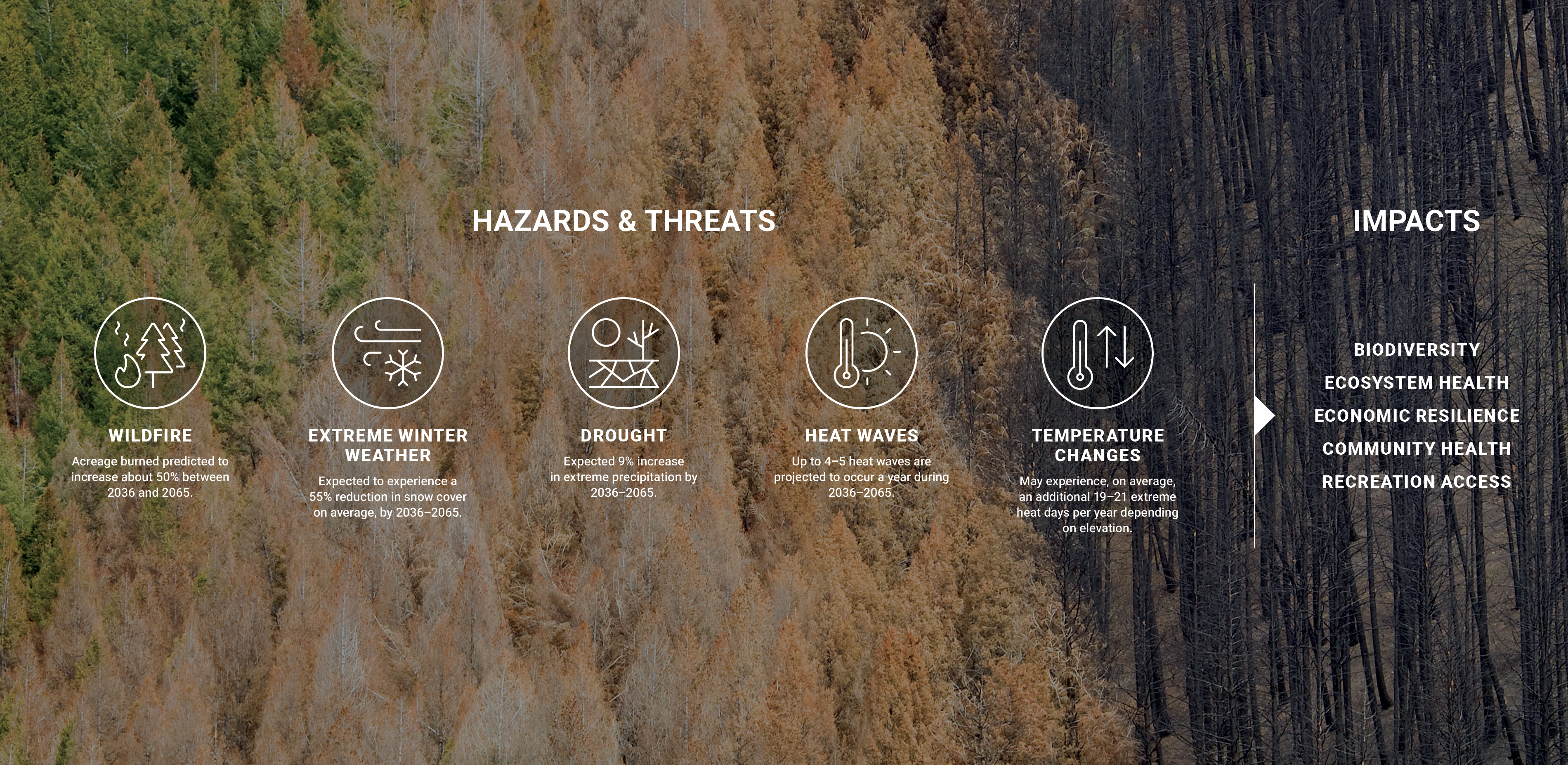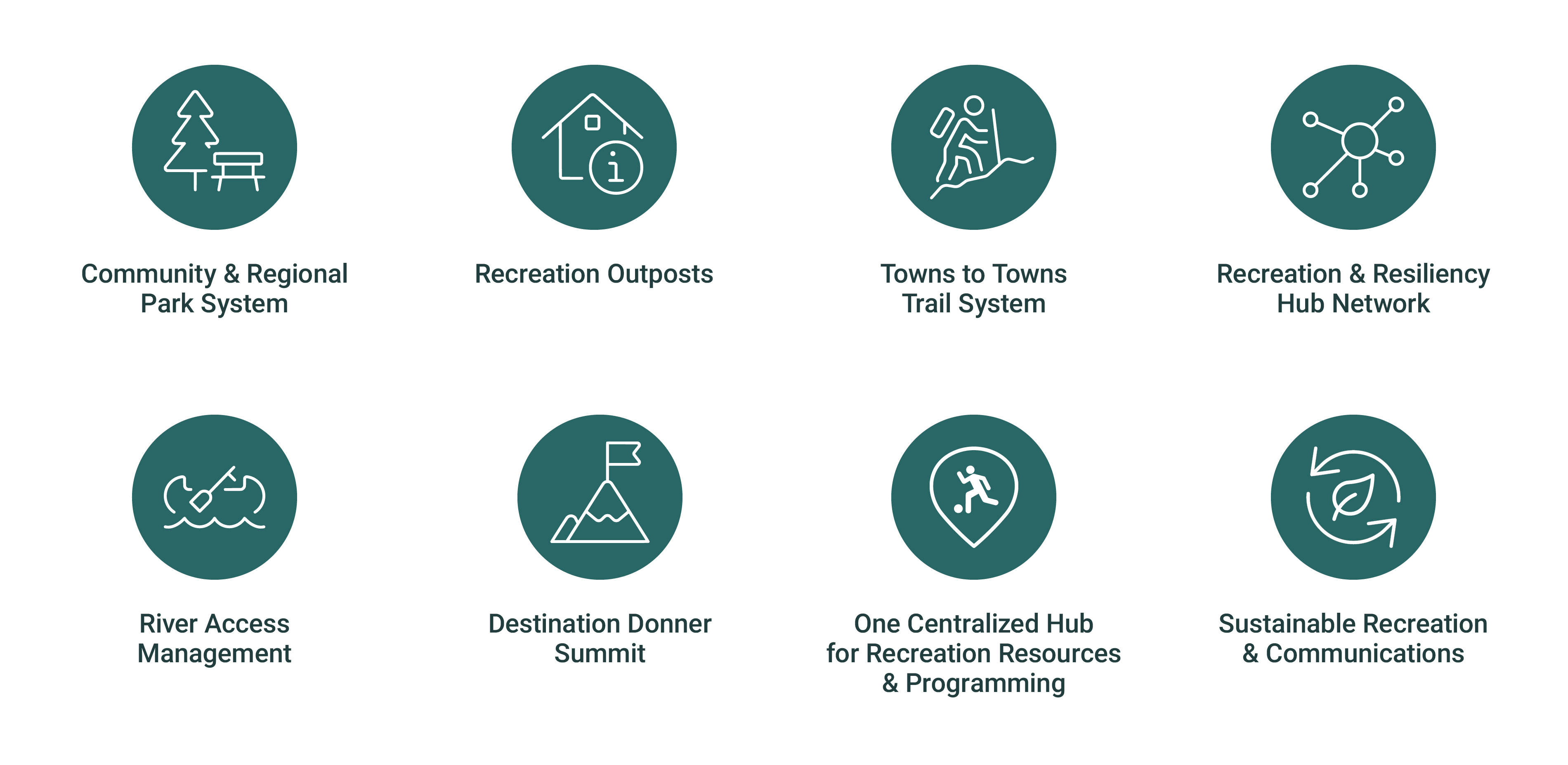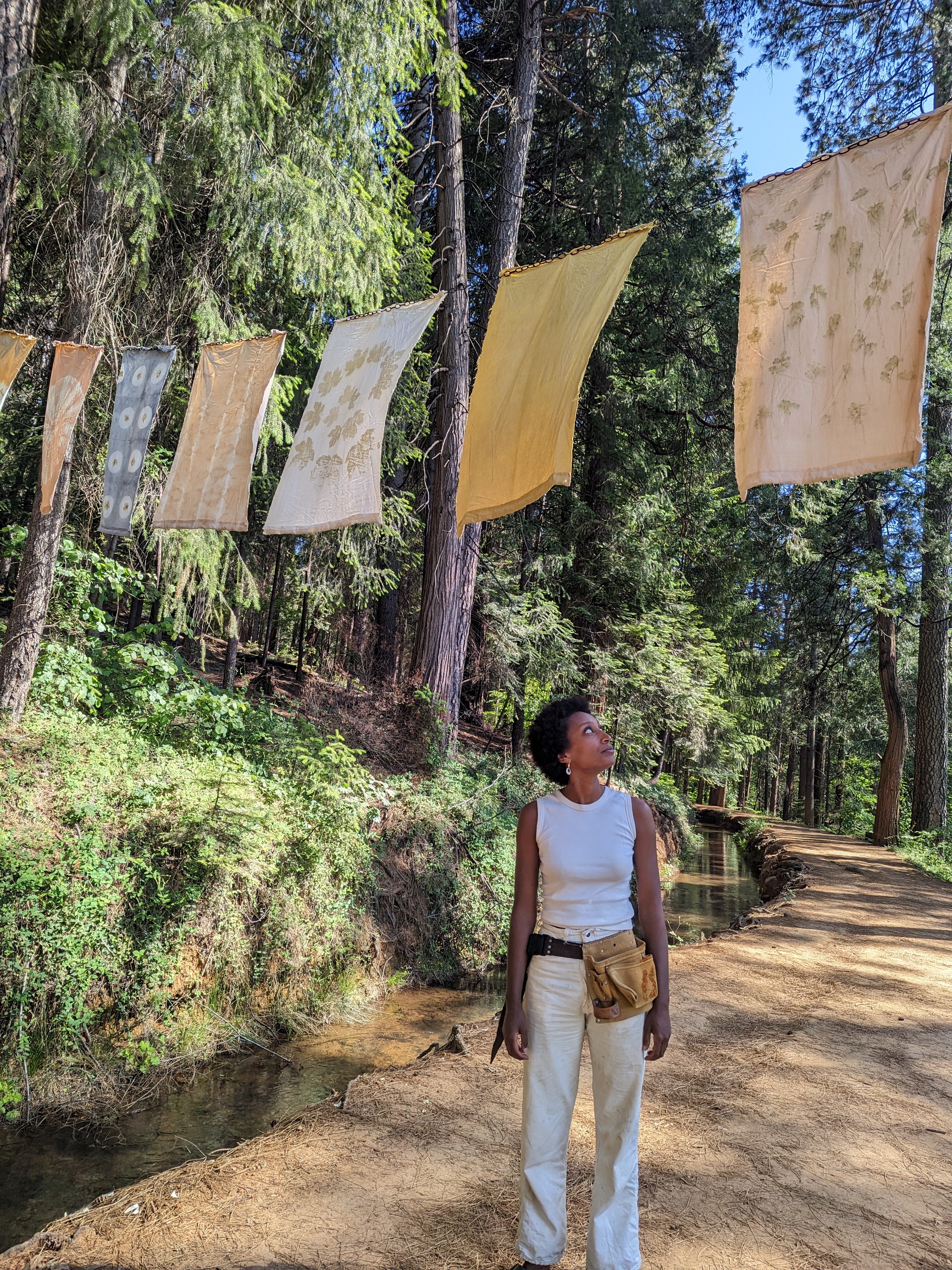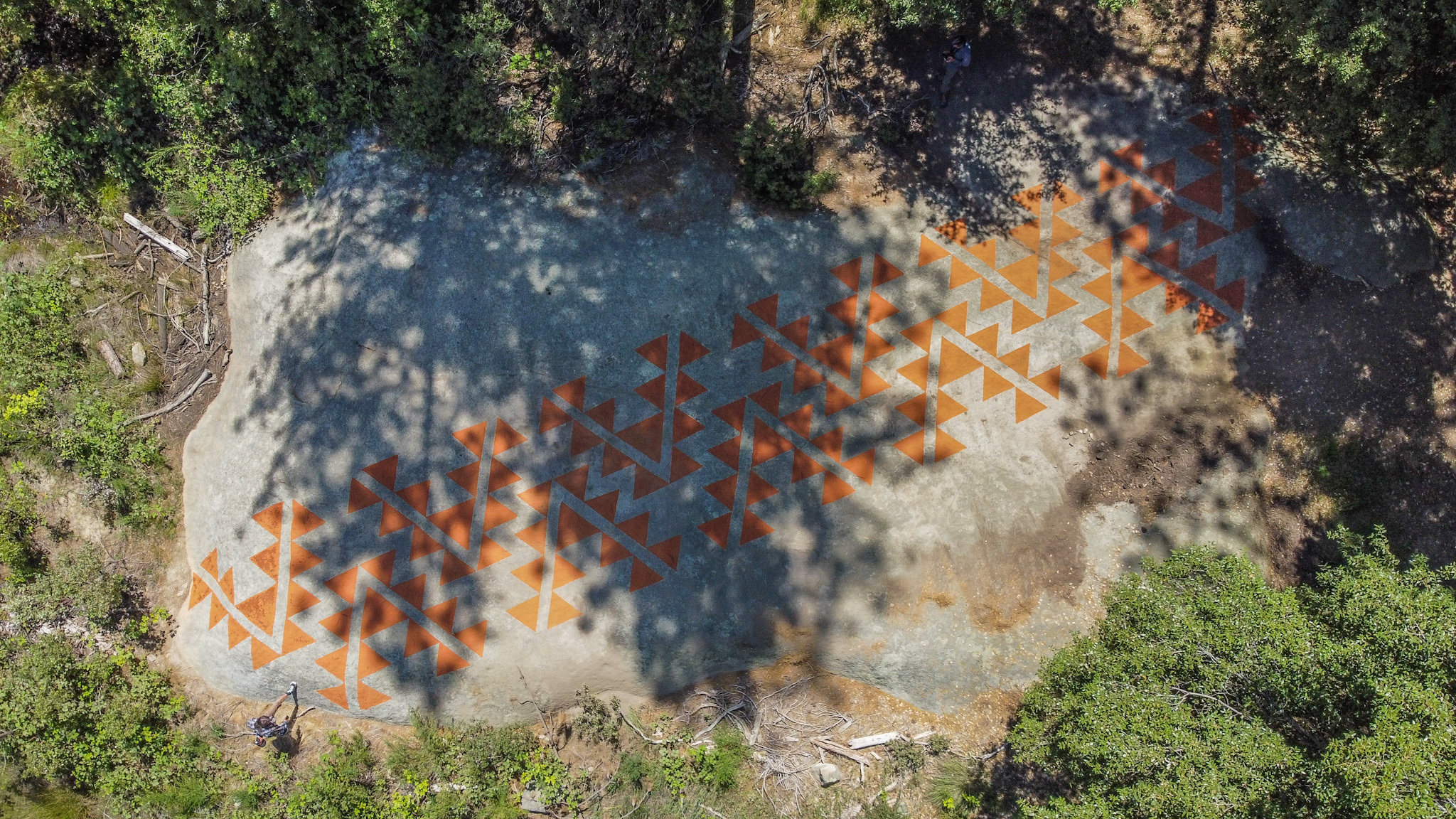Designing Resilience in a Landscape Under Pressure
Nevada County, nestled in the Sierra Nevada, is home to a mosaic of alpine lakes, lush forests, and vibrant cultural landmarks — including two of California’s 14 designated cultural districts. It also supplies more than 60% of the state’s developed water, making its ecological health critical not only locally, but statewide. But this treasured landscape is under siege.
In just the past five years, wildfire intensity has spiked dramatically, scorching more than 400,000 acres in nearby counties. Drought is reducing river flows by up to 30%, and recreation on public lands has soared by over 50%, further stressing ecosystems and rural infrastructure. Without a proactive strategy, the region’s environmental integrity and community health are under serious threat.

Climate action through recreation.
A Climate-Adaptive Vision Rooted in Local Voices
The Nevada County Recreation and Resiliency Master Plan is a first-of-its-kind framework that blends climate resilience, equitable access, and Indigenous stewardship into one comprehensive vision. We led a robust, inclusive engagement process — collaborating with over 90 organizations, including seniors, youth, tribal leaders, and emergency responders — to ensure the plan reflects diverse needs and wisdom.
Grounded in GIS mapping and environmental science, the plan overlays wildfire corridors, high-use recreation zones, at-risk ecosystems, and vulnerable communities to pinpoint where interventions will have the greatest impact.
Building Resilience Hubs and Nature-Based Infrastructure
At its heart, the plan transforms public spaces into resilience hubs — multi-functional community anchors that provide emergency shelter, access to food and water, digital connectivity, and climate-safe recreation. These hubs are supported by wildfire-adapted park designs, river corridor protections, and riparian restoration, all while reducing carbon emissions and preserving biodiversity.
In total, more than 200 site-specific projects were evaluated, with eight priority zones identified for high-impact investment. This scalable model ensures that adaptation efforts address both ecological urgency and social equity.

Eight focus areas for priority, high-impact investment.
Centering Indigenous Knowledge
As the ancestral homeland of the Nisenan and Washoe peoples, Nevada County’s future must honor its past. The plan integrates Indigenous knowledge systems, including the Nisenan ethic of caretaking and the Washoe philosophy of balance, into every layer of design. Key initiatives include:
- Prescribed burns to restore ecological balance
- Meadow revitalization to reestablish gathering places
- Native plant restoration and cultural landscape recognition
- Tribal-led stewardship funded through aligned grant structures
This approach not only honors cultural heritage but also ensures that environmental justice is embedded in policy.


- Arts and culture interwoven with daily recreation experiences. Prayer Flags, Celebration of Trails 2023. Photo by Kate Gazzo.
- Respecting indigenous values. Still Here by Andres Amador.
From Plan to Implementation: A Model for the Future
More than a planning document, this is a roadmap for action. With targeted zoning reforms, low-carbon infrastructure incentives, and shovel-ready project packages, the plan is already accelerating investment in nature-based climate adaptation. By aligning public funding streams with community and ecological priorities, Nevada County is creating a climate-resilient recreation network that serves as a national model.